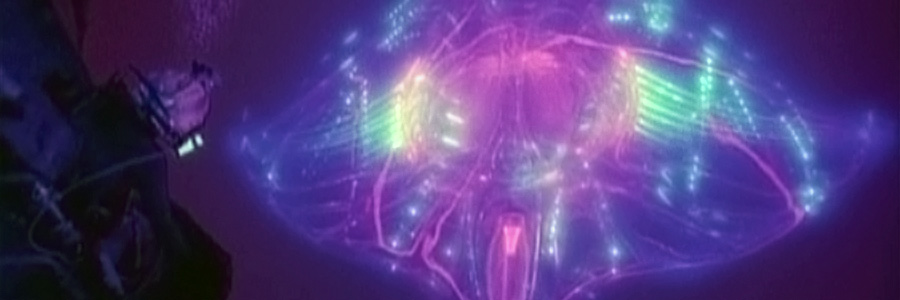
The Abyss (Special Edition)
20th Century Fox
Original release: August 9th, 1989
Running time: 139 minutes
Writer and director: James Cameron
Composer: Alan Silvestri
Cast: Ed Harris, Mary Elizabeth Mastrantonio, Michael Biehn, J.C. Quinn, Leo Burmester
Deconstructing Cinema: One Scene At A Time, the complete series so far
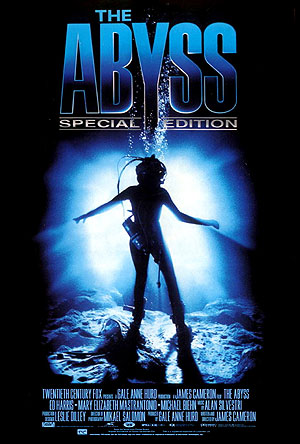
We’ve split the atom, started the Human Genome Project and travelled into space, but as a species, the human race has only just begun its journey toward understanding its place in the cosmos. We still don’t know if the universe is infinitely large, or even if ours is the only one that exists, but there’s another question that’s been with us right from that start; are we alone? We’re most certainly not alone. You don’t need the ‘Drake Equation’ or ‘Fermi Paradox’ to ponder the possibilities. After all, these two theories are older than the certainty that there are countless suns with orbiting planets.
Though numbers mean little when they concern the ‘unknown’, they can put things into perspective: Pontifical science deems it possible there are 4,500,000,000 Earth-like planets in the Milky Way galaxy. If one in 100 of these planets actually are ‘like Earth’, and again 1% of these really developed intelligent, sentient life, there would have been 450,000 civilizations in the Milky Way. If only one in 100 of these civilizations have survived cosmic and planetary catastrophes and, lastly, 1% of these survived the technological age and mastered space-time travel, then there would have been 45 extra-terrestrial civilizations in the Milky Way. There are more but for the sake of the thought-play let’s use ‘modern’ numbers… We leave the Milky Way — which is the step where we add a Zero to the ‘and then there were fewer’ game, each step of the way.
‘Modern numbers’ say there are 350,000,000,000 large galaxies in the universe (as far as humans can look at present). Using the Milky Way numbers, it’s not impossible there are 15,750,000,000,000 extra-terrestrial civilizations in the currently known universe. Let’s say it’s approximately 15 trillion ‘star-faring’ civilizations. Let’s assume only one in 1,000 of them discovered Earth, and one in 1,000 of these 15 billion civilizations know there is intelligent life on this planet. This would mean there are 15,000,000 extra-terrestrial civilizations that may know everything about Earth there is to know. But maybe only a thousandth of them care about contact with us and, over time, a thousandth of the latter came to this planet or have otherwise made contact, it would still leave us with 150 alien civilizations that have, at one time or another, visited Earth or made contact in other ways.
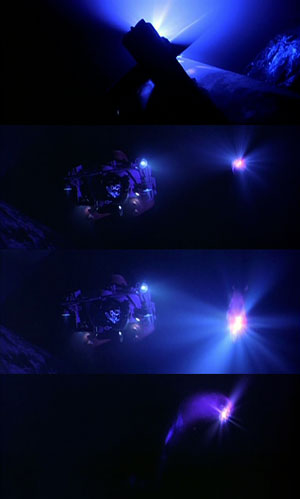
Those numbers are likely to make you pause for thought. Just imagine it; 150 alien civilizations that have, at one time or another, visited Earth or made contact in other ways. Where is everybody? According to many researchers around the world, they’ve always been among us. We need to only look at the cave paintings left behind by our ancient ancestors, at the carvings etched into the sides of mountains and on the ground, at many of the other artworks that depict flying crafts at a time when humans hadn’t even invented the wheel yet and listen to countless testimonies of modern-day eye witnesses and how they conflict with official reports from NASA and other space agencies… We are most certainly not alone.
In James Cameron’s landmark science-fiction film we see this in one of the most spectacular scenes depicting extraterrestrial life since Steven Spielberg’s Close Encounters Of The Third Kind in 1977. Building on the tensions between America and Russia over the use of nuclear weapons, The Abyss is similar to 2010: The Year We Make Contact (1984) and the ill-received Superman IV: The Quest for Peace in that it takes our fears over nuclear war and tries to bring about a peaceful resolve for all parties concerned.
The film opens with a US ballistic missile submarine sinking near the edge of the Cayman Trough after an accidental encounter with an unidentified submerged object. The Soviets try to salvage it but a hurricane moves and makes the job too difficult for them. The Americans decide to send in a SEAL team to mount a rescue using the Deep Core, a privately owned experimental underwater platform designed by Dr. Lindsey Brigman (Mary Elizabeth Mastrantonio). She accompanies the SEAL team to oversee the mission even though she knows she’ll have to deal with her estranged husband, Virgil “Bud” Brigman (Ed Harris) who’s working there as the platform’s foreman.
When the SEAL team try to find out what caused the sub’s failure, they encounter something they can’t explain. Shortly afterwards, in one of the film’s impressive sequences we see Lindsey glimpsing something while out in her pod as her lights go dim and her thrusters loose power. Something appears in front of her, a luminescent object which we then see is actually a being, glowing with white, pink and blue light. As quickly as it appears it then disappears beneath her back down into the depths of the abyss, leaving her in darkness once more before the power comes back on.
While the SEAL team, including Lt. Hiram Coffey (Michael Biehn), believe that what Lindsey saw was a Russian submersible, she discusses what she really saw with Bud.
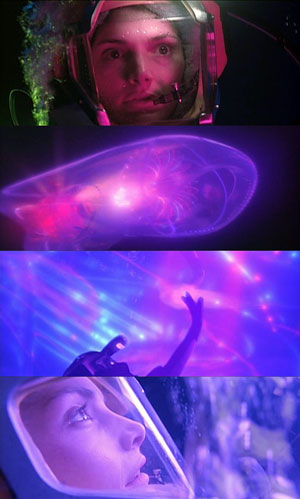
Did you get anything on the cameras? Video or anything?
LINDSEY:
No. Look, forget it. I don’t want to talk about it.
BUD:
Fine. Be that way.
LINDSEY:
I don’t know what I saw. Okay? Coffey wants to call it a Russian submersible, fine. It’s a Russian submersible. No problem.
BUD:
But you think it’s something else. What? One of ours?
LINDSEY:
No.
BUD:
Whose then? Lindsey? Talk to me…
The truth is Lindsey knows what she saw, but she’s too afraid to admit it. With the SEAL team’s convinced there are Russian submersibles down there, the situation escalates leaving the crew members on the Deep Core feeling as if they might be in the middle of another Cuban Missile Crisis. Coffey orders the SEALs to retrieve a warhead from the submarine before the supposed Russians can reach it, but the hurricane causes a crane from the Deep Core’s surface support ship, the Benthic Explorer, to come crashing down on them. Falling just shy of the Deep Core, they breathe a sigh of relief, but then it begins its descent off the cliff of the ocean floor into the abyss, its weight pulling the tether and the whole platform towards the dropoff.
The Deep Core manages not to plummet together with the crane, but with the severe flooding caused by the accident, several of its crew members dead and power at a critical level, things don’t look good for them. It’s at this point Lindsey suits up and goes outside to have a look at the damage caused. Needless to say, it’s also at this point she has another encounter. With her comms failing once more, a creature appears behind her with its glowing colours again. This time we can see more details. It’s incredibly beautiful, its outer shell is transparent and we can see what looks like spinning parts of machinery inside, but we know it’s a living creature. Then it glides away and for a second or two Lindsey is alone until a whirring sound from the abyss reveals itself to be another creature, much larger and complex in design than the two she’d seen before. It observes her and then she steps forward to touch it. Just when she remembers to take a picture, it disappears and her power comes back on.
Back on board the Deep Core, this time she’s more willing to discuss her experience.
There is something down there. Something not… us.
CATFISH:
You could be more… specific?
LINDSEY:
Not us. Not human. Get it? Something non-human, but intelligent… A non-terrestrial intelligence
HIPPY:
A non-terrestrial intelligence. NTIs. Man, that’s better than UFOs. Oh but that works too… Underwater Flying Objects.
CATFISH:
Are we talkin’ little space friends here?
HIPPY:
Hell yeah! Hot rods of the Gods. Right, Lins? No really! It could be NTIs. The CIA’s known about them forever. They abduct people all the time. There was once —
LINDSEY:
Hippy, do me a favor… stay off my side.
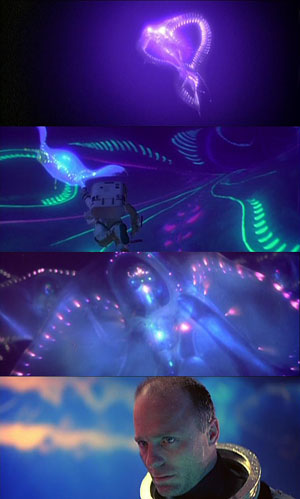
Lindsey’s encounter with the NTIs isn’t taken seriously by any of the crew, except for Hippy, whom no one takes seriously anyway. It will be quite some time before they realize she was right along and The Abyss goes on to tell a story mixing international relations and extraterrestrial encounters that’s both exciting and life-affirming to experience over and over again. While it does this we also come to realise something about ourselves as a species and our place in the cosmos; that we may be small but what we do matters. The message in the film differs from its theatrical cut which is missing around forty minutes of footage, the most of which comes from the scene onwards where Bud dives into the abyss to defuse a nuclear device, knowing the amount of oxygen needed for the drop means it’s a one way ticket. With the device defused and his oxygen running out, Bud send a message to Lindsey, simply declaring “love you wife.”
It’s at this point in the film the aliens show him more footage of atrocities our species have been committing, mostly from the Vietnam War, as well as of man-made environmental disasters. Cameron cuts back to footage of the giant waves that are now approaching shore lines, but the aliens decide to hold them off – they stand still for a moment and begin to recede. Brigman asks “why didn’t you?” It comes back down to the message he sent to Lindsey, that what he was doing was out of love and it was a sacrifice he was willing to make, but as a comment on the Cold War, Cameron’s film has more to say.
- [1] The Films of James Cameron: Critical Essays, Matthew Kapell, Stephen Mcveigh. McFarland, 2011.
It’s a bold statement to make and given that it’s so blatant in the special edition, it’s not hard to see why this might’ve had something to do with it being cut from the theatrical release. But coming back to the question of ‘Where is everybody? ‘, the Drake Equation and the Fermi Paradox, there are countless and rather complex reasons why ‘public’ contact hasn’t happened in the way we see toward the climax of The Abyss, and the so-called ‘Prime Directive’ is the least of them. However, there is contact — on many levels. Those who see and listen, know. Ultimately, there is no room for belief, only knowing. If you let go.
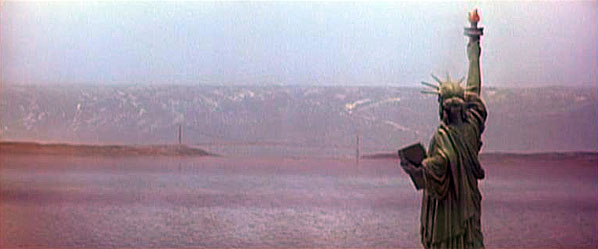

Patrick Samuel & Jonahh Oestreich
Patrick and Jonahh are the Editors in Chief at Static Mass.
Patrick is a composer and music producer with a philosophy degree. Static Mass is where he lives his passion for film and writing about it. A fan of film classics, documentaries and World Cinema, Patrick prefers films with an impeccable way of storytelling that reflect on the human condition.
Jonahh is a photographer and journalist who has been working in the media industry for over 15 years, mainly in television, design and art. As a boy, he made his first short film with an 8mm camera and the help of his father. His obsession with (moving) images and stories hasn’t faded since.
© 2022 STATIC MASS EMPORIUM . All Rights Reserved. Powered by METATEMPUS | creative.timeless.personal. | DISCLAIMER, TERMS & CONDITIONS
HOME | ABOUT | CONTACT | TWITTER | GOOGLE+ | FACEBOOK | TUMBLR | YOUTUBE | RSS FEED
CINEMA REVIEWS | BLU-RAY & DVD | THE EMPORIUM | DOCUMENTARIES | WORLD CINEMA | CULT MOVIES | INDIAN CINEMA | EARLY CINEMA
MOVIE CLASSICS | DECONSTRUCTING CINEMA | SOUNDTRACKS | INTERVIEWS | THE DIRECTOR’S CHAIR | JAPANESE CINEMA





